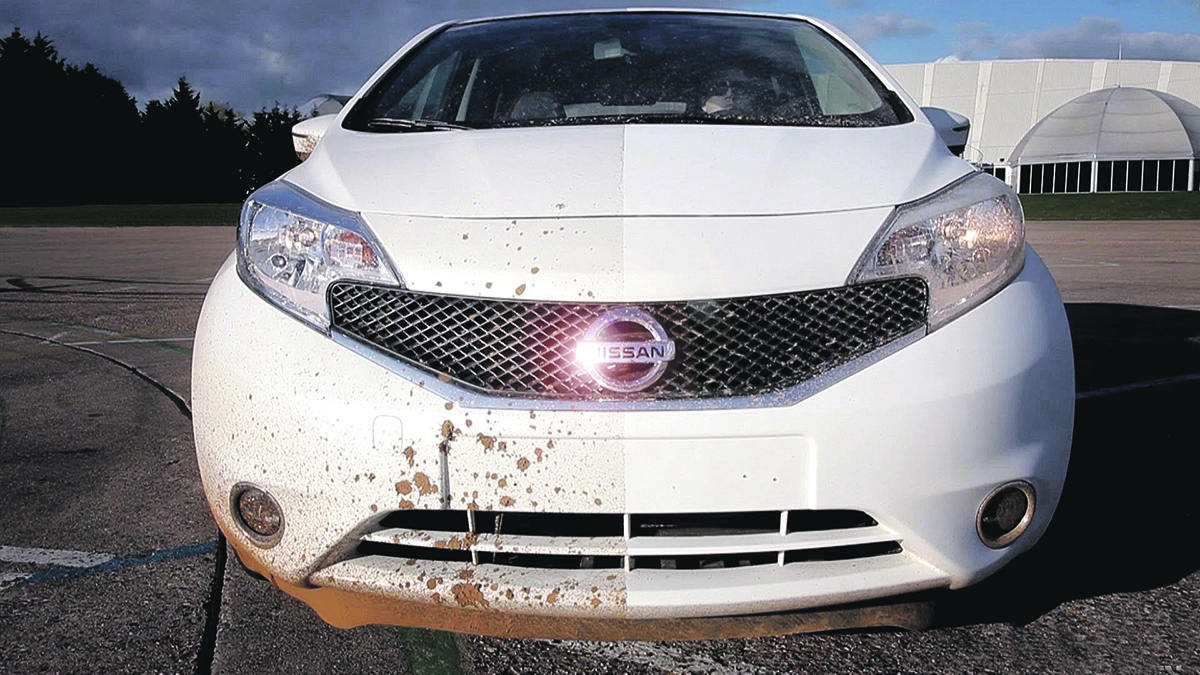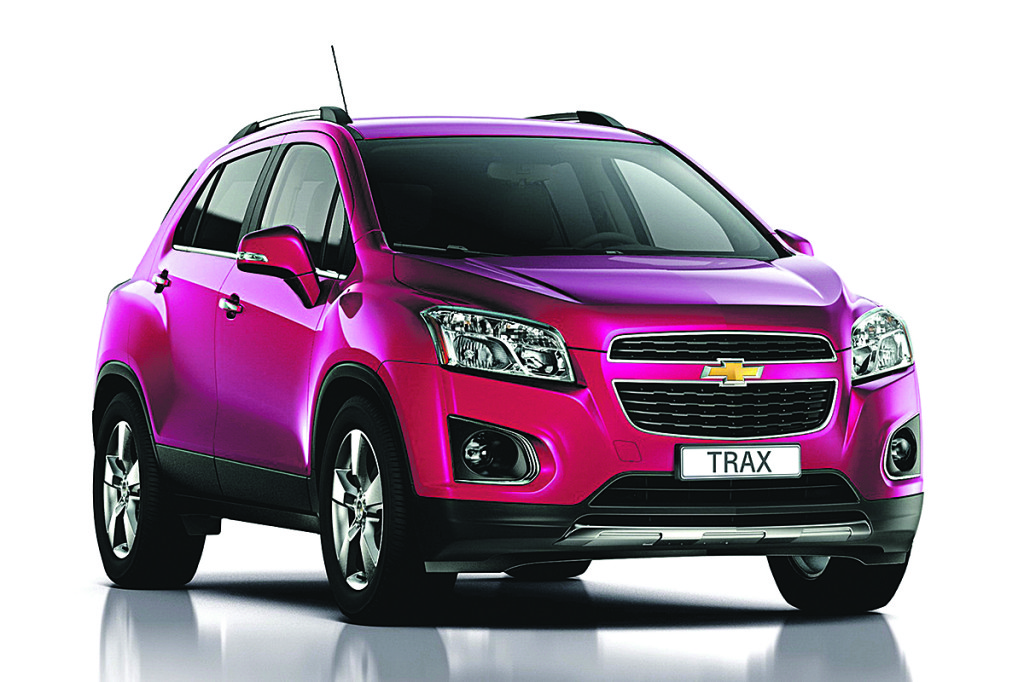A car you don’t have to wash? Even if it’s a white car you just drove through the mud? Or got splattered with motor oil, bird droppings, tree sap? You get the idea.
It’s only in the testing stages now, but someday, if nano-paint technology succeeds, washing your car may become a thing of the past. Nissan has announced it’s testing the self-cleaning paint on its new European Note model over the next several months.
The super-hydrophobic (water-repellent) and oleophobic (grease-repellent) paint is being put through a variety of messy road conditions. Nissan is the first carmaker to test the technology, called Ultra-Ever Dry®, on an actual car body.

(Photo courtesy of Nissan)
By creating a protective layer of air between the paint and environment, the paint effectively stops standing water and road spray from creating dirty marks on the car’s surface.
So far, the coating, which is being marketed and sold by UltraTech International Inc., has responded well to common use cases including rain, spray, frost, sleet and standing water, say Nissan researchers in Switzerland.
Would this mean the end of charity car washes? Commercial car washes? The guy with a hose and a sponge in his driveway every weekend?
While there are currently no plans for the technology to be applied to the Note or other models as standard, Nissan says it will continue to consider the coating technology as a future “aftermarket option.” In other words, it’s a ways off from your local dealer’s showroom, and even then, it looks like something you’d have to pay extra for.
How long it would take other car-makers to adopt self-cleaning paint is another yet-to-be answered question, as is the biggest question to Syracuse-area drivers: How well can it fend off road salt? No word on that yet.
Get ready for another little SUV
In case you’re looking for a small SUV, you’ll have one more to choose from by early 2015. Chevrolet will start selling it Trax mini sport utility vehicle in the United States, though it’s a familiar vehicle elsewhere. It was sold in 140 other countries as of last year, according to Car and Driver magazine.
The Trax was among the vehicles Chevy trumpeted at the just-concluded New York International Auto Show. The New York Times called it “an attractive little hauler” and noted it has 48.4 cubic feet of cargo area, with the rear seat folded. It will be equipped with a 1.4-liter turbocharged 4-cylinder engine, which is offered in the Chevy Sonic, and Chevy expects it to be rated at 138 horsepower, also like the Sonic.

(Photo courtesy of Chevrolet)
An all-wheel drive system will be available on the Trax, which will have a six-speed automatic transmission; a six-speed manual transmission apparently won’t be offered in the U.S., the Times said. No word yet on whether a diesel version will be available in the U.S.
Pricing information and an on-sale date are not yet available.
The Trax debuted as a concept car in 2007, and the current vehicle was shown at the 2012 Paris auto show and in 2013 at the Detroit auto show.
California turns green
When it comes to ecology-conscious car shoppers, the Golden State is the greenest, according to Cars.com, the automotive website that just released its annual list of the top 10 cities or metropolitan areas where car shoppers go green. California claims seven of the top 10 (up from five last year), and two more cities are also on the Left Coast. Only one — Charlottesville, Va. – is non-Western.
The data is based on Cars.com visitors’ searches for hybrid and electric vehicles.
Here is the list, starting with the “greenest”:
1. San Francisco-Oakland-San Jose, Calif.
2. Charlottesville, Va.
3. Los Angeles
4. San Diego
5. Monterey-Salinas, Calif.
6. Chico-Redding, Calif.
7. Santa Barbara-Santa Mario-San Luis Obispo, Calif.
8. Portland, Ore.
9. Sacramento-Stockton-Modesto, Calif.
10. Seattle-Tacoma, Wash.
March’s top 10 best-selling vehicles in U.S.
1. Ford F-series trucks
2. Dodge Ram pickup
3. Chevrolet Silverado
4. Toyota Camry
5. Nissan Altima
6. Honda Accord
7. Ford Fusion
8. Toyota Corolla/Matrix
9. Ford Escape
10. Honda CR-V
–Cars.com
Great dates in U.S. auto history:
1928: Rearview mirrors became standard equipment on U.S. production cars.
1923: Automatic windshield wipers were introduced as standard equipment.
1902: First speeding ticket was issued in the U.S.
1898: First woman driver in the U.S.
— Antique Automobile Club of America



